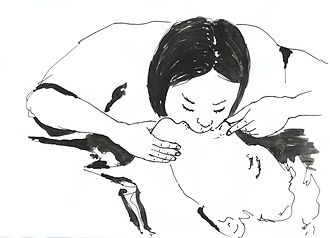Difference between revisions of "AY Honors/First aid/Rescue breathing"
From Pathfinder Wiki
m (6 revisions: re-import from WB, including edit history) |
|||
| Line 1: | Line 1: | ||
| − | |||
| − | |||
| − | |||
| − | |||
[[Image:insulfation2.jpg|thumb|Rescue Breathing. The head of the patient is tilted backward. The rescuer closes the nose with one hand, while pushing the chin downward with the other hand to keep the patient's mouth open.]] | [[Image:insulfation2.jpg|thumb|Rescue Breathing. The head of the patient is tilted backward. The rescuer closes the nose with one hand, while pushing the chin downward with the other hand to keep the patient's mouth open.]] | ||
Revision as of 01:33, 15 March 2014
- If the patient is breathing, do not administer rescue breathing. Rescue breathing is an emergency treatment that may help the victim regain the ability to breathe on his own.
- Tilt the victim's head back, and lift their chin (head-tilt chin-lift). The head will not remain in this position by itself, you must maintain the head-tilt chin-lift throughout.
- In certain cases, you may not be able to give rescue breaths through the mouth - blow into the nose and seal the mouth instead.
- Pinch the victim's nose
- Put your mouth on the mouth of the victim, maintaining a good seal, and blow into the mouth. These breaths should be gentle and last no longer than 2 seconds to prevent air from entering the stomach.
When you have given two rescue breaths, begin chest compressions if you are trained to do so. Otherwise, continue with rescue breathing: 2 breaths every 5 seconds.
If the victim has recovered spontaneous respiration, put him in the recovery position, cover him, and monitor his breathing on a regular basis until an ambulance arrives.

